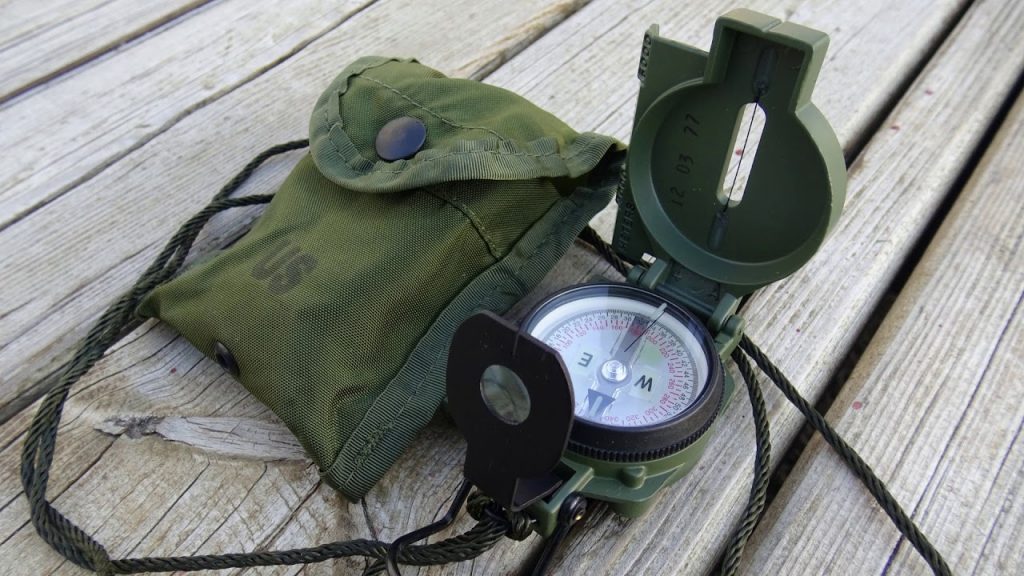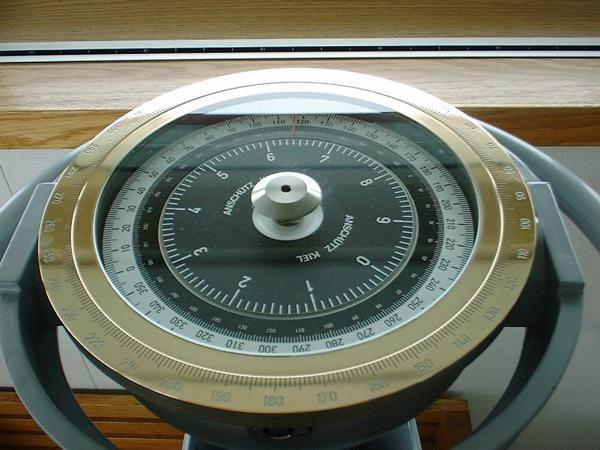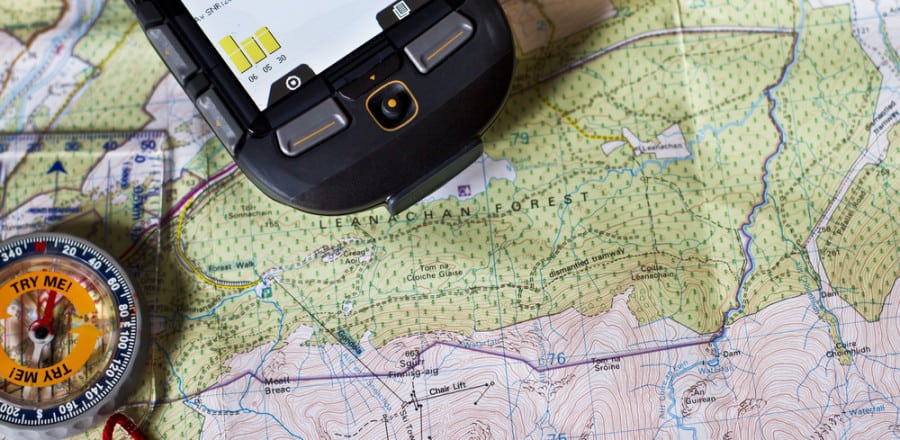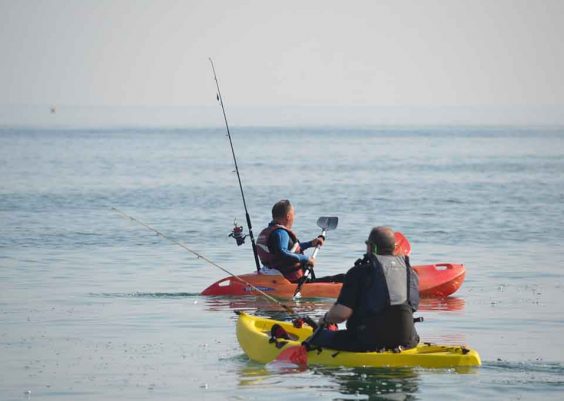Generally speaking, everyone around the globe knows about the basic idea of compasses: navigational devices built specifically to shows direction. However, not a lot of people know that there are actually multiple types of compasses in use nowadays that feature different constructions for different purposes. Normally, the average persons have no practical need to learn about all the compass types. However, for outdoor adventurers that intend to venture into the wilderness, a clear understanding of compasses would certainly prove handy.
Contents
What Exactly Is A Compass?

To put in plainly, a compass is an instrument that humans rely on for centuries to get bearings. For most of the time, a special diagram, known as the compass rose, is present on the face of the compass to show cardinal directions (North, South, East and West). In addition to that, the majority of compasses tend to display convenient marking for angles in degrees to minimize errors while navigating. Though more modern devices have been introduced over the years, compasses remain the top choices for navigation in various settings.
In term of functions, many compasses operate base on the Earth’s magnetic field: they have a magnetized needle that points toward the magnetic North. However, as the magnetic North is not the true North, people put together the electrically powered gyrocompasses for more accuracy. Compared to magnetic compasses, gyrocompasses use the rotation of Earth to find geographical direction so distortions in the magnetic field have no effects on them. That being said, the handiness of magnetic compasses still makes them ideal in certain applications.
History Of The Compass: Overviews
Through intensive researches, the first compass is widely believed to be invented more than 2,000 years ago in Han dynasty, China. The initial devices employed lodestones, which are naturally magnetized stones of irons, but later switched to more common iron needles. The use of compasses spread to other continents so within a couple of centuries, everyone hangs on to them while traveling from land to sea. While countries may slightly alter the design here and there to match their preferences, the compasses stay largely the same.
For some time, conventional compasses often consist of 3 primary components: the freely pivoting needle, the glass cover and the rose. After a while, users notice that the design is too vulnerable to vibrations: excessive swings, wobbles and bumps frequently affect the precision of the reading. The solution is to submerge the needle in liquids such as ethyl alcohol, lamp oil, purified kerosene and so on. Aside from enhancing the readability of the compasses, the liquids considerably reduce the wearing rate of the needle as well.
Considering the fact that traditional compasses work on the basis of detecting the Earth magnetic field, they run into many errors from time to time. In addition to that, people that travel around the globe need to know the true North, not the magnetic North. As a result, it’s just a matter of time before more and more types of compasses that work on other principles come into existence. Nonetheless, the magnetic compasses still hang around in applications that don’t require absolute precision.
Different Types Of Compasses
Through the way they work on the field, it’s possible to divide modern compasses into two major groups: magnetic compasses and non-magnetic compasses. Each group contain a number of different types of compasses
Magnetic Compasses

1. Lensatic Compass
Designed to optimize strength, lensatic compasses prove capable of enduring a lot of abuse on the field without breaking apart. Most conventional compasses of this type have 3 main parts: the base, the cover and the lens. The base features the needle, dial and rotating scales. Next, the cover, which holds the sighting wire, serve to protect the integrity of the compass once it’s closed. Last but not least, the lens flips out after you open the compass, you use it to read the dial. Lensatic compasses also incorporate luminous sighting slots for night navigating
2. Thumb Compass
For your information, the name comes from the fact that people often attach compasses of the type to their thumb using a small elastic band. Among all the types of compasses for orienteering, a sport that tests your navigational skills, thump compasses happen to be the most popular ones around. Usually, such devices tend to have few if any markings for degrees which make them only useful at orienting a map to the magnetic North. Moreover, thump compasses may be transparent so it’s a breeze for you to see the map right through them.
3. Solid State Compass
Have you ever wonder why a couple of smartphones could display cardinal directions like compasses? Well, it’s quite simple actually: they have solid state compasses built out of several magnetic field sensors inside them. by measuring the response of the Earth’s magnetic field using highly calibrated internal electronics, compasses of the type shall be able to deduce the heading of the magnetic North. Naturally, every solid state compasses require a stable supply of electricity to work as designed.
Non-Magnetic Compass

1. Gyrocompass
People, especially mariners, who need to locate the true North for route planning consider gyrocompasses to be the ideal options among other types of compasses. Compasses of the type automatically identify directions by themselves without requiring additional adjustments from humans. Because of that, gyrocompasses prove superior to most magnetic compasses nowadays in term of accuracy. In exchange, such devices have complex designs, require professional maintenances and need powers to work.
2. Astrocompass
In polar regions, gyrocompasses as well as conventional magnetic compasses could behave erratically which make it necessary for people to use something else as guidance. Before the introduction of GPS, the most popular way to find direction in these locations is to rely on astrocompasses. By inputting the latitude and longitude, astrocompasses shall deliver precise readings once sighted at any astronomical objects in the sky. Astrocompasses mostly see service near the poles due to the unreliability of other navigational aids.
Magnetic Compass vs. Non-Magnetic Compass: The Pros and Cons
At moderate latitudes, magnetic compasses perform admirably but when the users approach the Earth’s magnetic poles, things become problematic. In the close proximity of the poles, the magnetized needle of such compasses would begin to drift constantly instead of pointing toward a particular direction. Furthermore, magnetic compasses got influenced by any magnetic field in addition to the Earth’s. Some of the later compasses do include compensate magnets which let you correct the reading.
Considering their independence, affordable price and ease of use, magnetic compasses should remain in popular use for years to come.
Compared to their magnetic counterparts, the majority of non-magnetic compasses have the distinct advantage of being considerably more accurate. Since such compasses don’t work base on the Earth’s magnetic field, they allow the users to find the true North without much difficulty in most of the cases. However, non-magnetic compasses in use nowadays tend to demand a lot of skill and knowledge if you want to operate them effectively and efficiently. Last but not least, the high acquisition cost means users prefer to get magnetic compasses.

It’s safe to say to that the compass is a time tested navigational device that never let you down. For most of the time, outdoors adventurers could find their way around particular locations assuming that they have a functioning compass and an accurate map. That being said, recent advances in technology give birth to a new navigational system: GPS (short for Global Positioning Systems). Not only GPS display information about your position but it also helps you plan the best route to your destination. So GPS vs compass: Who is going to win then?
Overall, all types of compasses in use fall behind GPS in a couple of aspects. While GPS is able to offer an array of information such as places, point of interest, topography and alike, the compass only give you directions. Additionally, GPS receives signals from satellites on the orbit which ensure that the precision of the displaying data is superb. Usually, you don’t have to worry about running into navigational errors while using GPS unless the location recently witnesses dramatic changes in the layout. Nonetheless, the good old compass still possesses some notable perks.
The compass never runs out the battery, you could use it on every terrain imaginable and most important of all, the device comes pretty cheaply. A quality compass only cost you a few dozen dollars. How about a GPS unit? You have to spend at least $100 in order to get a basic model and top tier units go beyond that. Therefore, it’s necessary to take personal performance into account. The majority of experienced outdoor adventurers like to bring a GPS unit, a compass and a map just in case.
Last Updated on July 16, 2019







While an interesting topic, the grammar and spelling is confusing. For one example, the author has a section on “Thumb” compasses but refers to them in the body of the text as “Thump” compasses. And, it would have been nice to have presented an image.